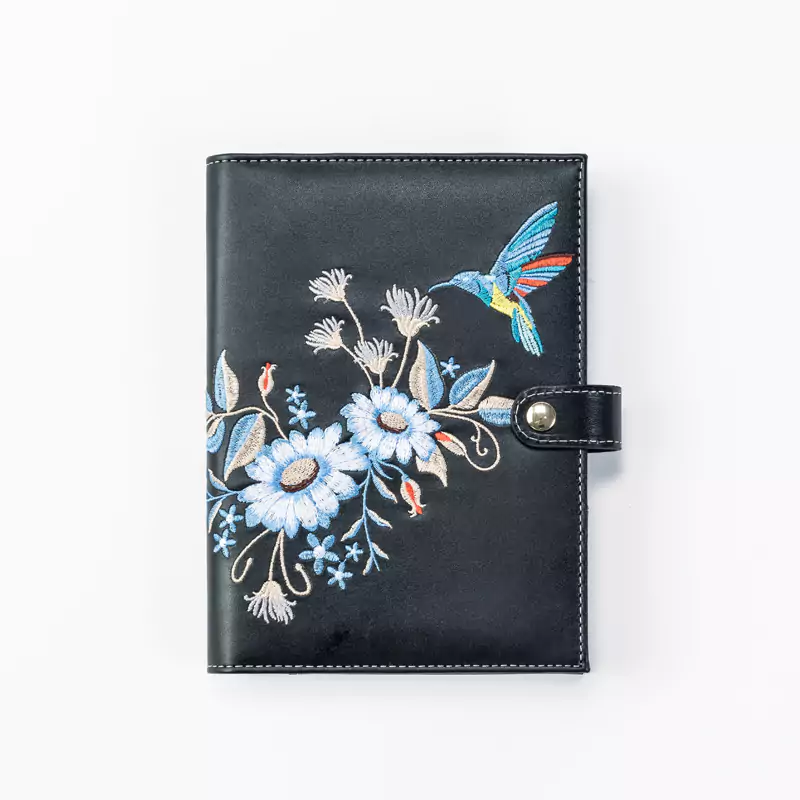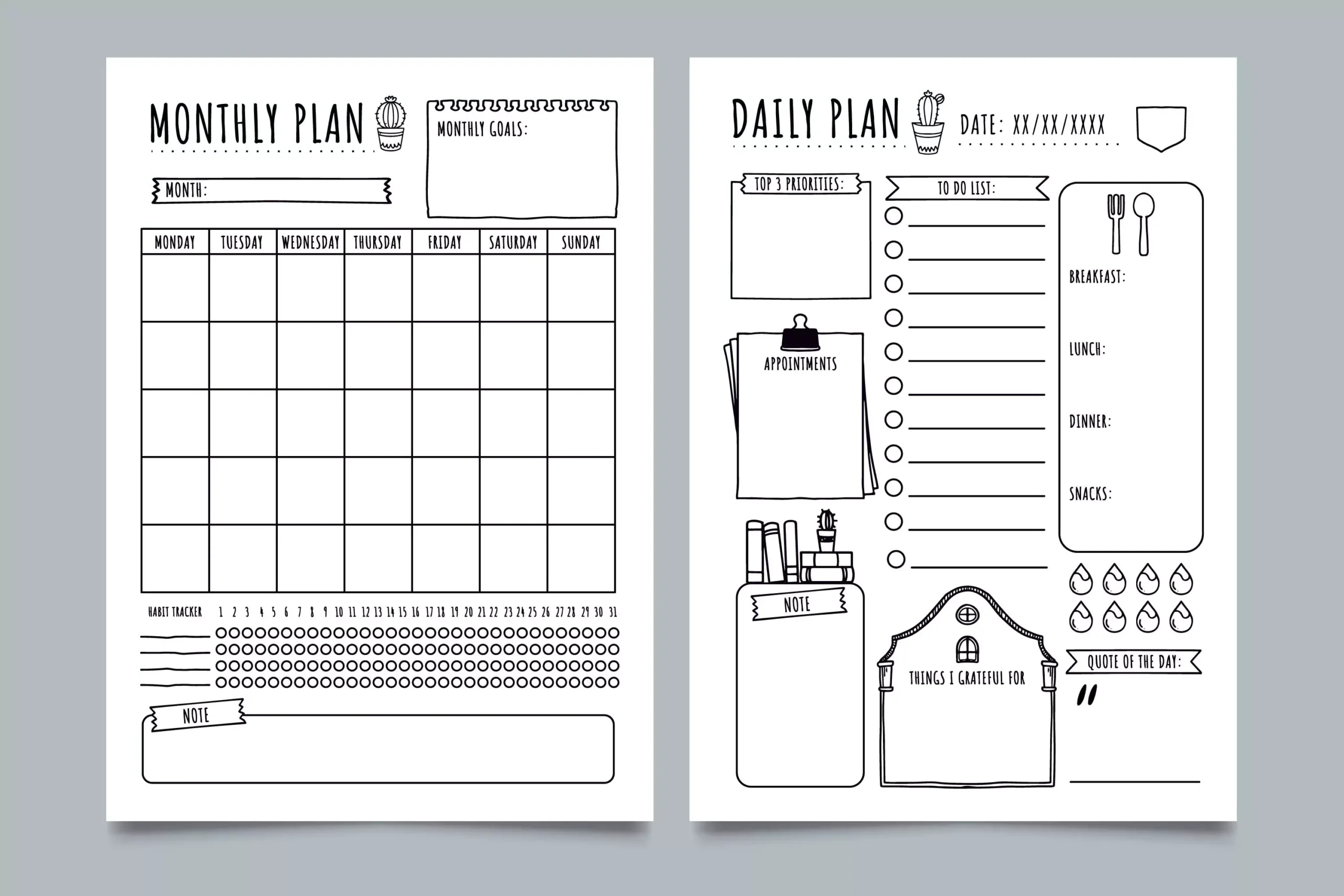Using a planner can help you be more productive by adjusting to your specific requirements, such as tracking your goals and managing your time effectively. Different layouts for tasks, weekly schedules, and long-term planning can improve efficiency, while the use of high-quality materials ensures durability. Additional features like quotes, customizable covers, and dividers not only add functionality but also reflect your style. Keeping it sustainable, with updates and eco-friendly refill options, is important. For crafted, customized planners, LABON offers tailored solutions.
Why is a Personalized Planner Essential?
What Are the Benefits of Using a Custom Planner System?
Using a planner system offers many advantages tailored to your specific requirements. Unlike off-the-shelf planners, custom systems enable you to integrate functions that align with your schedules and future goals. This boosts functionality, transforming your planner into a tool for productivity rather than just a diary. You have the option to include features such as goal trackers, habit monitoring tools, or dedicated sections ensuring adaptability. Additionally, a unique planner fosters organization, assisting you in meeting deadlines and obligations efficiently.
How Can Tailored Planners Boost Productivity and Organization?
Personalized planners cater to your requirements by simplifying task and schedule organization to help you stay on track with your priorities and minimize distractions effectively. For instance, incorporating time blocking into your planner designates dedicated time slots for each task to enhance productivity. Moreover, tailored layouts offer clarity that assists in managing workloads efficiently over various days or weeks.
What Should You Consider Before Creating Your Planner?
How Do You Identify Your Goals and Objectives?
Before creating a personalized planner, clarify your aims. Whether it’s better time management, tracking fitness progress, or planning career milestones, knowing these goals shapes the design. Break objectives into actionable, measurable steps for clarity and achievability.
Why Analyze Daily, Weekly, and Monthly Needs?
Understanding your scheduling requirements is crucial for creating a designed planner layout. Take into account the level of specificity required on a basis. Whether you need an hourly breakdown or not. And how these activities fit in with your weekly or monthly objectives. This guarantees that the planner caters to both short-term task organization and long-term goal monitoring.
Which Tools Are Best for Planner Development?
Choosing the right tools is critical for designing your planner. Select software or templates that offer customizable options without being overly complex. For physical planners, opt for manufacturers known for high-quality materials and flexible customization.
How Do You Design the Layout of Your Personalized Planner?
How Should Pages Be Structured for Functionality?
The layout significantly impacts usability. Structuring pages with dedicated sections enhances clarity and accessibility.
What Makes Daily Planning Sections Effective?
Daily sections should include spaces for top tasks, appointments, and notes. This keeps immediate responsibilities in focus while allowing flexibility for changes.
Why Include Weekly Overviews?
Weekly overviews offer a quick view of upcoming tasks and deadlines. They help balance workloads across multiple days effectively.
How Do Long-Term Goal Tracking Pages Help?
Pages dedicated to long-term goals keep big-picture objectives visible amid daily tasks. These can include milestones or progress charts for clarity.
Should Flexible Features Be Incorporated?
Adaptability is crucial in a personalized system. Features like removable pages or modular layouts allow the planner to evolve with your changing needs.
What Materials and Tools Should Be Selected?
Does Paper Quality Matter?
High-quality paper enhances durability and the writing experience. Options like wood pulp paper or cotton paper ensure smooth writing surfaces while preventing ink bleed-through.
Which Binding Options Work Best?
Select spiral binding for flexibility, ring binding for easy page changes, or book-bound formats for a polished look, based on your preferences.
What Writing Instruments Enhance Usability?
Using quality pens or markers ensures clean, smudge-free writing, improving the planner’s usability.
For those seeking to elevate their stationery experience with tailored solutions for personal or professional needs, consider exploring LABON as a trusted partner.
Integrating LABON Products into Your Custom Planner System
How Can High-Quality Paper Enhance the Writing Experience?
Ensuring a writing process is crucial for a planner to be efficient and reliable; using top-notch paper guarantees longevity and boosts usability significantly! Utilizing materials such as wood pulp or cotton paper provides a platform for writing that prevents ink smudging and allows for clear note-taking sessions to unfold effortlessly! Opting for alternatives, like stone paper or watercolor paper, not only enhances functionality but also brings a touch of visual appeal to the table! Whether it is scribbling down thoughts or laying out detailed agendas. Superior paper quality truly enriches the entire writing journey!
Why Are Durable Binding Solutions Crucial for Planners?
Binding solutions are vital for a planner’s durability. Spiral binding provides flexibility, while ring binding allows easy page additions or removals. Book-bound formats offer a professional look. Choosing the right binding ensures your planner withstands frequent use, remaining a reliable organizational tool.
How Do Customizable Covers Improve Aesthetics?
The cover of a planner serves a purpose—it not only offers protection but also showcases your personal style preferences. Customizable covers allow you to select from materials such as PU leather, linen, or coated paper based on your preferences. Opting for features like leatherette paper adds an element of elegance, making your planner a fashionable accessory. Merging functionality with appeal results in a one-of-a-kind planner design that truly stands out.

Adding Personalization Features to Your Planner System
What Role Do Inspirational Quotes Play in Personalization?
Adding motivational quotes or affirmations to your planner inspires daily focus. These elements set a positive tone and reinforce goals. Placed at the start of weeks or throughout pages, they make your planner engaging and meaningful.
How Can Colors, Fonts, and Themes Reflect Individual Style?
Customizing colors, fonts, and themes aligns your planner with your personality. Bold colors energize planning, while minimalist designs offer a sleek, professional look. Tailoring these elements makes your planner both functional and a reflection of you.
Why Add Stickers, Tabs, and Dividers for Organization?
Stickers, tabs, and dividers are practical additions that enhance organization within your planner. They allow you to categorize sections efficiently and locate information quickly. These features are particularly useful for managing multiple projects or tracking various aspects of life simultaneously.
Testing and Refining Your Personalized Planner System
How Can Trial Periods Help Evaluate Usability?
Testing your planner during trial periods reveals its practicality. Use this time to evaluate if the layout meets your needs and identify areas for improvement. Adjustments ensure the final product is functional and user-friendly.
Why Gather Feedback from Users?
Feedback from users with similar organizational needs offers valuable insights. Their perspectives can highlight overlooked details or suggest features to enhance usability.
What Adjustments Should Be Made Based on Practical Usage Scenarios?
Real-world use often uncovers design gaps. For example, unused sections or cluttered layouts may need tweaks to optimize space and efficiency.
Maintaining and Updating Your Planner Over Time
How Do You Keep Content Relevant?
Real-world use often uncovers design gaps. For example, unused sections or cluttered layouts may need tweaks to optimize space and efficiency.
Why Conduct Regular Reviews?
Regular reviews keep you aligned with long-term goals while adapting to new circumstances. This ensures your planner remains a valuable tool for success.
How Does Leveraging Refill Systems Promote Sustainability?
Refill systems extend your planner’s lifespan, promoting eco-friendliness. Using sustainable materials like FSC-certified paper supports environmental conservation while maintaining quality.
For those aiming to enhance their stationery experience with bespoke solutions for personal or professional needs, consider partnering with LABON.
FAQs
Q1: What materials should I focus on for my custom planner?
A: Prioritize high-quality options like wood pulp paper for smooth writing and durable bindings like spiral or book-bound formats.
Q2. Can I include digital components in my custom planner?
A: Yes, incorporating QR codes linked to digital tools or apps enhances functionality while preserving traditional aspects.
Q3. Are eco-friendly planner options available?
A: Yes, using FSC-certified materials ensures sustainability while maintaining high-quality standards.

